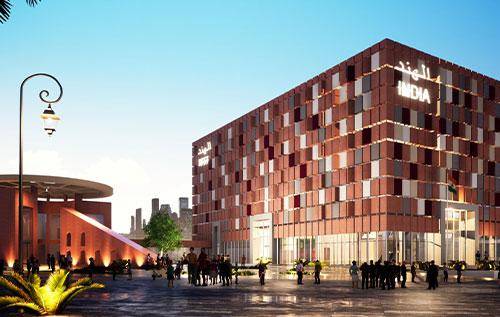It is important to come out and start narrating every facet of India’s emerging economic story.
On 1 October, the world’s largest ever global expo begins in Dubai, UAE. Since 1851, the once-in-five years World Expo is a platform for nations to showcase their best, whether in innovation, thought leadership or culture. This time 190 countries are participating. Five years ago, in Milan, India only showcased Basmati rice in a larger global rice-themed pavilion. Ten years ago, in Shanghai, India showcased its history and culture via its own pavilion built with reference to traditional motifs. For the first time, in Dubai, India is going to showcase its economic rise as the primary piece, with culture and history as supporting acts. This is an important shift in approach.
Of course, India has a history, heritage and culture to be proud of. And that must be leveraged for tourism which can help the economy significantly by boosting growth and jobs. But it’s time to change the wider international perception of India as merely a land of exotica. A world expo is not a trade fare. It is visited by ordinary people from all walks of life. Hence, it is an opportunity. The India Pavilion isn’t designed with any reference to the past. It is futuristic. Technology defines the exterior and interior. More specifically, it is a digital marvel. The exterior façade will digitally showcase the best of India. Inside, there are no physical stalls, only digital screens where the Union Government, states and corporates will present their achievements and future potential.
The overarching theme for the India Pavilion, around the $5 trillion economy and resurgence post Covid, is forward looking. By inviting corporates to be active participants in the Expo, the Government is sending a clear signal that India’s private sector and business community are an integral part of the India story. That is a change from the past where government dominated any international showcasing of the country. Interestingly, the pavilion will be run by FICCI, an apex chamber of industry, rather than the Government-owned ITPO, which has traditionally run such exhibitions. The Government seems more ready than before to leverage private sector capabilities in execution.
Countries have often leveraged big-ticket international events to tell their story of achievement to the world. Usually, this entails hosting the Olympic Games or football World Cup, events which attract the attention of the world and plenty of visitors. South Korea announced its arrival as an economic powerhouse by hosting the Seoul Olympics in 1988, just two and a half decades after its per capita income was lower than India’s. China announced its own power ambitions by hosting the Olympics in 2008. Emerging Brazil hosted the football World Cup in 2014. Russia did the same in 2018 showcasing its resurgence after a long period of decline post the collapse of Communism. India is still some distance away from hosting a mega sporting event. The one smaller multinational sporting event it did host, the Commonwealth Games in Delhi in 2010, attracted attention for all the wrong reasons.
Hopefully, some day in the not very distant future, India will do something on a large scale to celebrate becoming a $5 trillion or $10 trillion economy. But, in the meanwhile, it is important to come out and start narrating every facet of India’s emerging economic story. The fact is that India needs a huge quantum of investment from overseas to attain those goals in rapid time.
It is easier said than done to have a futuristic outlook in India. Anyone who is active on social media would have noted how many discussions and debates centre around India’s past. Perhaps, that is inevitable in a country that has a tumultuous history and where narratives since Independence have been largely one sided. All history is inevitably political, and politics has to play a fine balancing act between addressing the past (in all its glory and misery) and the future.
The present only complicates things further. Any oversell of the India story risks alienating those that are still waiting for prosperity. The NDA’s India Shining campaign in 2004 failed to recognize that too many people were on the margins. While the 17 years since have seen plenty of progress, the fact remains that India is a lower middle-income country with a per capita income of just $2,000. It is a chicken and egg situation. India is not rich because it hasn’t received the kind of investment that say China has. But the political economy doesn’t approve of the courting of investors and businesses by Government.
To his credit, Prime Minister Narendra Modi is trying to delicately balance issues of the past, present and future in his politics. In countries without a past, or where the past can be easily blanketed out (think Singapore or the US), it is easy to focus solely on the future. In India, attention will always be divided.
Still, it is good to note that the Government is willing to explicitly prioritise the future. In the end, that is where the Indian of today will live her life.
Dhiraj Nayyar is Chief Economist, Vedanta. Vedanta is a participant in the Dubai Expo.

